The AMD Radeon RX 590 Review, feat. XFX & PowerColor: Polaris Returns (Again)
by Nate Oh on November 15, 2018 9:00 AM ESTBattlefield 1 (DX11)
Battlefield 1 returns from the 2017 benchmark suite, the 2017 benchmark suite with a bang as DICE brought gamers the long-awaited AAA World War 1 shooter a little over a year ago. With detailed maps, environmental effects, and pacy combat, Battlefield 1 provides a generally well-optimized yet demanding graphics workload. The next Battlefield game from DICE, Battlefield V, completes the nostalgia circuit with a return to World War 2, but more importantly for us, is one of the flagship titles for GeForce RTX real time ray tracing, although at this time it isn't ready.
We use the Ultra preset is used with no alterations. As these benchmarks are from single player mode, our rule of thumb with multiplayer performance still applies: multiplayer framerates generally dip to half our single player framerates. Battlefield 1 also supports HDR (HDR10, Dolby Vision).
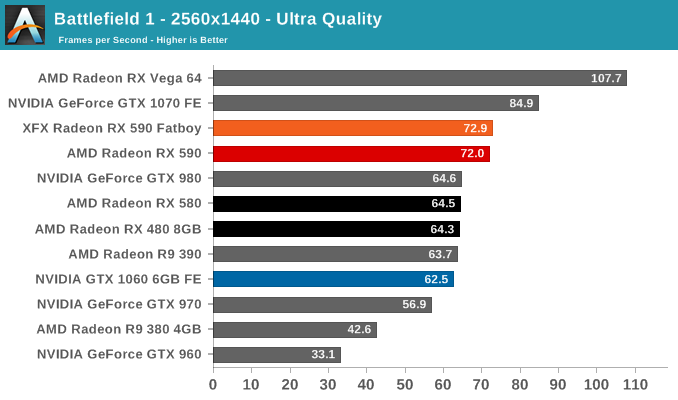
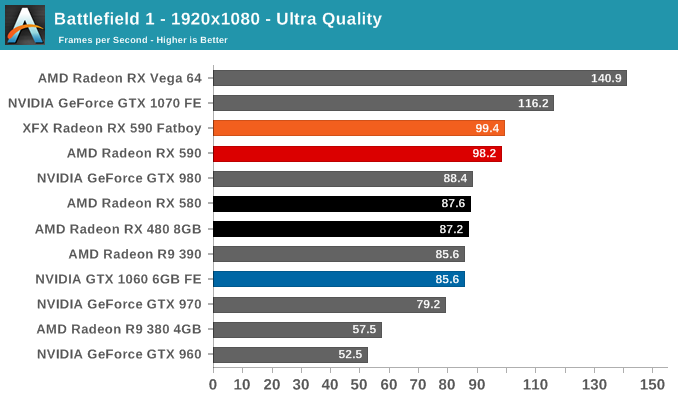
Battlefield 1 has made the rounds for some time, and after the optimizations over the years both manufacturers generally enjoy solid performance across the board. Here, the RX 590 clockspeeds firmly place it in the slot below the GTX 1070. The difference isn't world-changing, but because multiplayer framerates are often about half of singleplayer, the boost could have value for multiplayer fiends.
Here, the GTX 1060 6GB Founders Edition already starts off behind the original reference RX 480 8GB, and the higher clocks permit the RX 590 to make up ground on the GTX 1070 Founders Edition. For the RX 590, this level of performance is where it wants to be - creeping up on the GTX 1070 and firmly faster than its Polaris predecessors, the GTX 1060 6GB, and older-generation enthusiast-grade cards like the GTX 980. In practice, the competition will be factory-overclocked GTX 1060 6GB cards rather than the reference Founders Edition, and so there will be less room to maneuver.
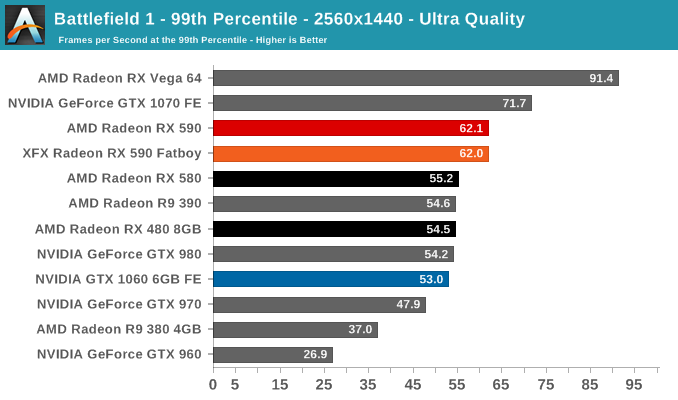
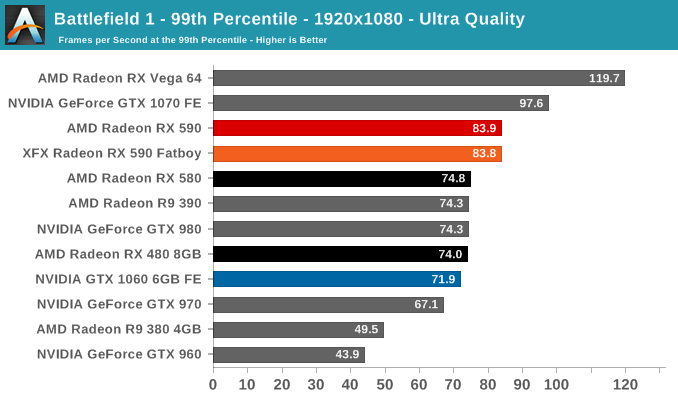
The trend continues for 99th percentiles, which are arguably more important than averages when it comes to fast-paced shooters.


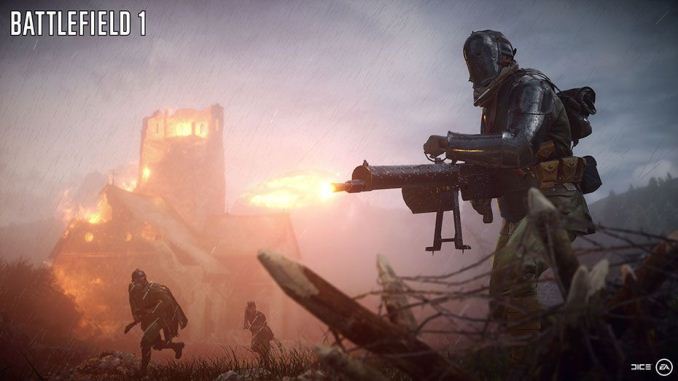








136 Comments
View All Comments
Diji1 - Thursday, November 15, 2018 - link
You know what they say about a fool and his money.Almost every gamer on Steam is using a GTX 1060 class GPU which is less powerful. Every single gamer on Steam made a loss on their "investment".
gopher1369 - Friday, November 16, 2018 - link
" I believe that the GTX 1070/Vega 56 ...should be considered as the minimum investment for a gamer in 2019"Meanwhile I'll continue to enjoy the vast majority of my games quite happily in 1080p / 60FPS on my perfectly good 1050Ti.
AMD#1 - Tuesday, November 20, 2018 - link
No, those prices are still to high. Vega is that expensive deu to HBM, and 1070 because NVIDIA is asking to dam much. 1070/V56 are high end, compaired to next gen it will be mainstream. Navi will hit early 2019, my guess is prices will get lowerdel42sa - Thursday, November 15, 2018 - link
patheticDragonstongue - Thursday, November 15, 2018 - link
Agree, 12nm might have helped them to hit higher clocks, but it certainly has not helped much at all in regards to power consumption or temps IMO, all for the "low price" of an additional 50+$ when it hits the shelf (knowing the AIB likely will not be $299 will most likely be $339 (~445-448 CAD)for me, the 570 seems "the better pick" for an overall capable 1080p level card or 1440p at reduced settings, at lest the power use is not terribad and pricing is much more "palatable" on the shelf compared to the 580s and likely very much compared to this 590 and the V56 which is over $600 where I can get them up here in the great white north.
WithoutWeakness - Thursday, November 15, 2018 - link
There is no "reference" 590 card. They are all AIB cards. The XFX card featured in the article is on sale on Amazon right now for the $279 MSRP. Sure, there will be triple-fan OC cards for $300+ and some RGB LED monstrosity models pushing closer to $400 but this is available today for the advertised price.At the same time, go buy a 570 or 580 (or even a used 480 8GB if you can find one that wasn't mined on) and OC the thing if you want. Nearly the same card and keep money in your pocket.
dazz112 - Thursday, November 15, 2018 - link
Seems like there's no reason to buy gtx1060 anymore (unless it's a lot less cheaper)ToTTenTranz - Thursday, November 15, 2018 - link
Unless you're stuck with a tiny form factor or a 300W PSU.silverblue - Thursday, November 15, 2018 - link
Except for the significantly better performance per watt, and the fact you can put that in a SFF case. There are obvious benefits to Polaris 30 such as FreeSync compatibility and the larger frame buffer, but if you require a new PSU when you didn't with the 1060, that's an extra cost.With the power figures on show here, I'm immediately wondering about the benefits of undervolting, as well as where the actual frequency sweet spot is. 12nm hasn't exactly been a notable success story for AMD, and with 7nm on its way, I'm not sure what this experiment was supposed to show.
Cooe - Thursday, November 15, 2018 - link
This is a completely different 12nm process than what AMD used for Zen+ (TSMC vs GloFo; Nate's article is wrong), so any equivalencies between them are actually largely just coincidence. Though I SERIOUSLY don't really know in what world you wouldn't described Zen +/Ryzen 2nd Gen as a success story.